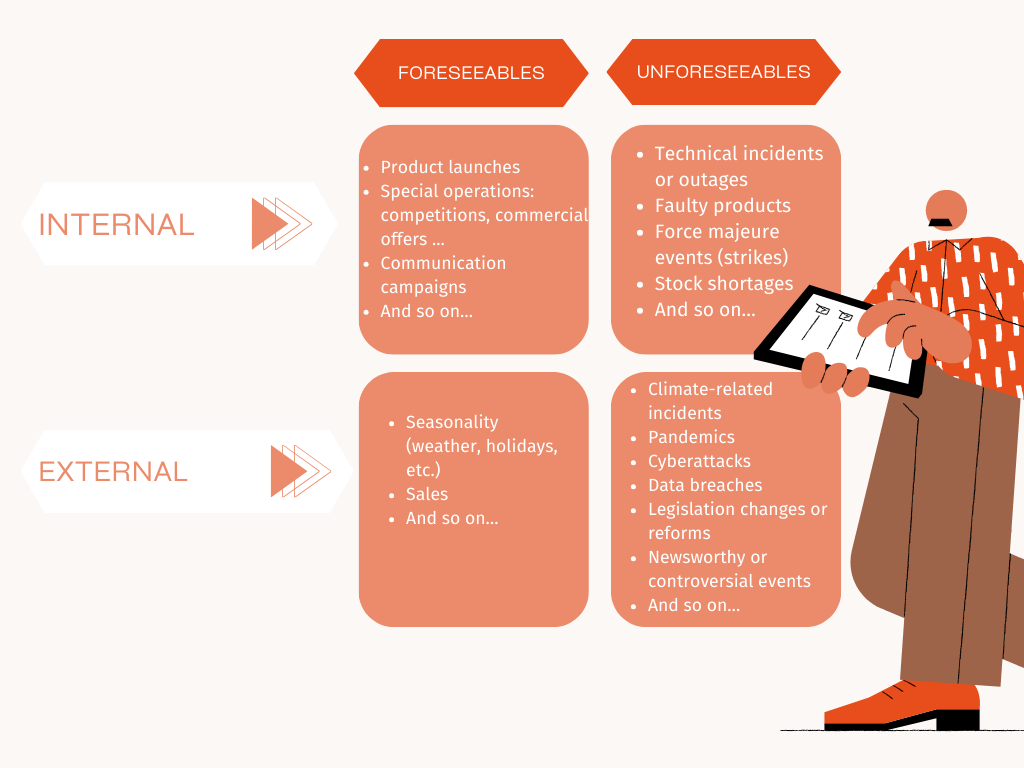Customer service plays a crucial role in a company’s success. It is the preferred point of contact between the company and its customers, and the quality of this service can have a direct impact on customer satisfaction and loyalty. However, it often happens that companies are confronted with both foreseeable and unforeseeable peaks in activity that strain their ability to effectively respond to customer demands. In this article, we are going to examine the sources of these interactions peaks , the consequences of poorly managed peaks, and finally, some potential solutions for dealing with them.
The main causes of activity peaks in customer service
Regardless of business sector, at one time or another, every company is faced with interaction volume variabilities. The causes of these increases and decreases in activity can mostly be explained by seasonality, as well as by factors both inside and outside the company:

Adverse consequences for customer services and the company:
Failing to effectively manage peaks in activity within your customer service department will have negative impacts on your customers and their satisfaction levels, and your staff, as well as on your company’s brand image:
- Customer dissatisfaction: Spikes in calls, tickets or emails can lead to significant degradation in handling times and wait times as well as in the quality of the responses given, which causes customer dissatisfaction as they feel neglected or poorly dealt with. With the risk that the customer leaves for the competition.
- Deterioration of the brand’s image: A bad experience with customer service is one of the main reasons why customer’s leave a brand, and a large number of them share their experiences on social networks or with their friends and family. As with the other channels, comments on social media must receive quick responses due to the risk of damaging the company’s reputation and discouraging potential new customers.
- Staff turnover and absenteeism: Poorly anticipating peaks in activity will disorganise the structure of your customer service and undeniably lead to a team that is under pressure, understaffed and unable to absorb the workload in the proper conditions. Absenteeism and staff turnover will increase.
- Increased costs: To deal with the increase in absenteeism and staff turnover, extra expenses will be involved to cover the costs of recruitment and training, administrative costs, software licensing fees, etc.
Key steps to better managing peaks in customer service activities
It is important to always bear in mind the impacts that inadequate preparation for peaks in activity can have within your customer service department. The keys to avoiding them are anticipation as well as communication, based on 6 tips that cannot be overlooked:
- Leverage the data from previous years: We can never repeat it enough, but reports are indispensable. These will allow you to analyse interaction records across all communication channels by period, by event, and so on… These analyses will allow you to highlight the seasonality of your activities and create a forecast.
- Equip yourself with a predictability tool: Based on interaction records, a forecasting tool will enable you to arrange the necessary resources according to volumes, schedules and skill sets. This type of tool is vital for good management of your customer service as it enables you to interpret the realities internal and external to the company and their impacts on customer service.
- Call upon a contact centre (BPO or outsourcer): Entrusting your customer services either in part or in full to an external service provider will bring you many advantages: cost savings, advice and expertise, etc. A contact centre will be able to assist you in managing peaks in activity by helping you to create forecasts and promptly increase resources.
Discover all the advantages of outsourcing your customer services by reading our article: “Outsourcing your customer service to a Contact Center “ - Support your customers in becoming more autonomous: Digital is a precious ally during busy periods as it allows you to implement self-service tools in your customer service, which reduces the number of incoming requests along with wait times. You have to identify the most simple tasks with the least added value that don’t require intervention from a Customer Adviser. These tasks could be handled by an FAQ, a chatbot, a voicebot, and so on…
- Offer your teams proximity coaching: The training and support given to your Customer Advisers are vital to maintaining the motivation and quality of your teams when the workload is more substantial.
- Opt for transparent communication: Inform customers of wait times or any potential technical issues. Also ensure that your Customer Advisers adapt their communications to apologise for the wait, for example. More communication will help reduce frustrations and appease dissatisfied customers.
In conclusion, effective management of peaks in customer service activities is essential to ensuring customer satisfaction, maintaining good service quality, preserving the company’s reputation and optimising costs. By planning for and anticipating these peaks, using appropriate technological solutions and providing proximity support to their teams, companies can offer exceptional customer experience, even during busier periods.








